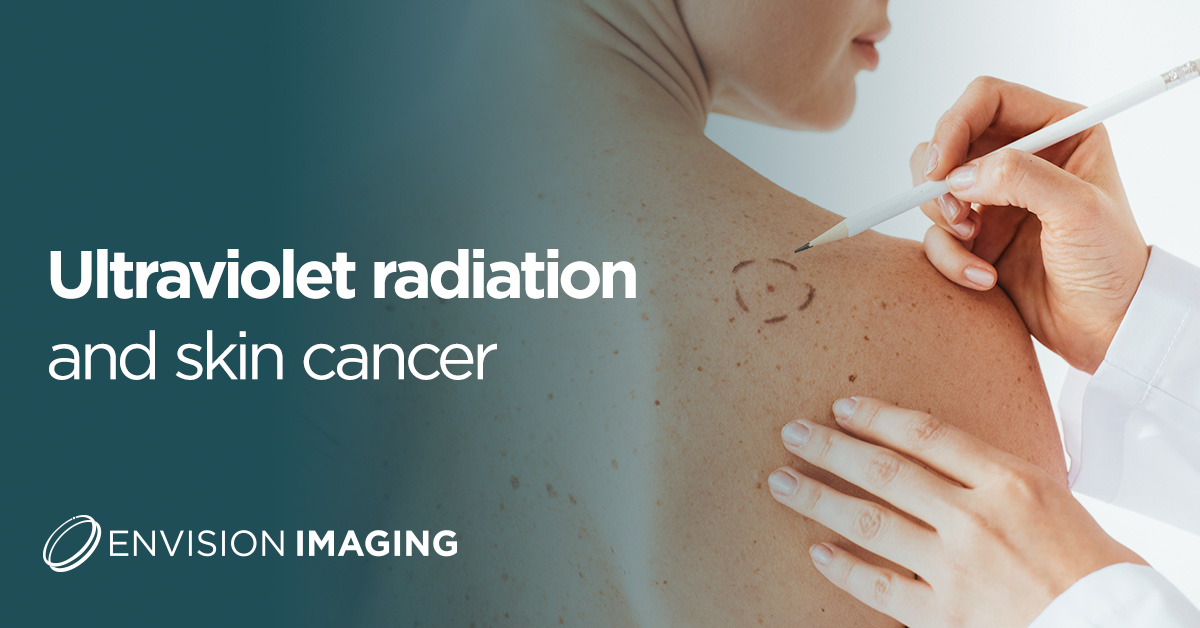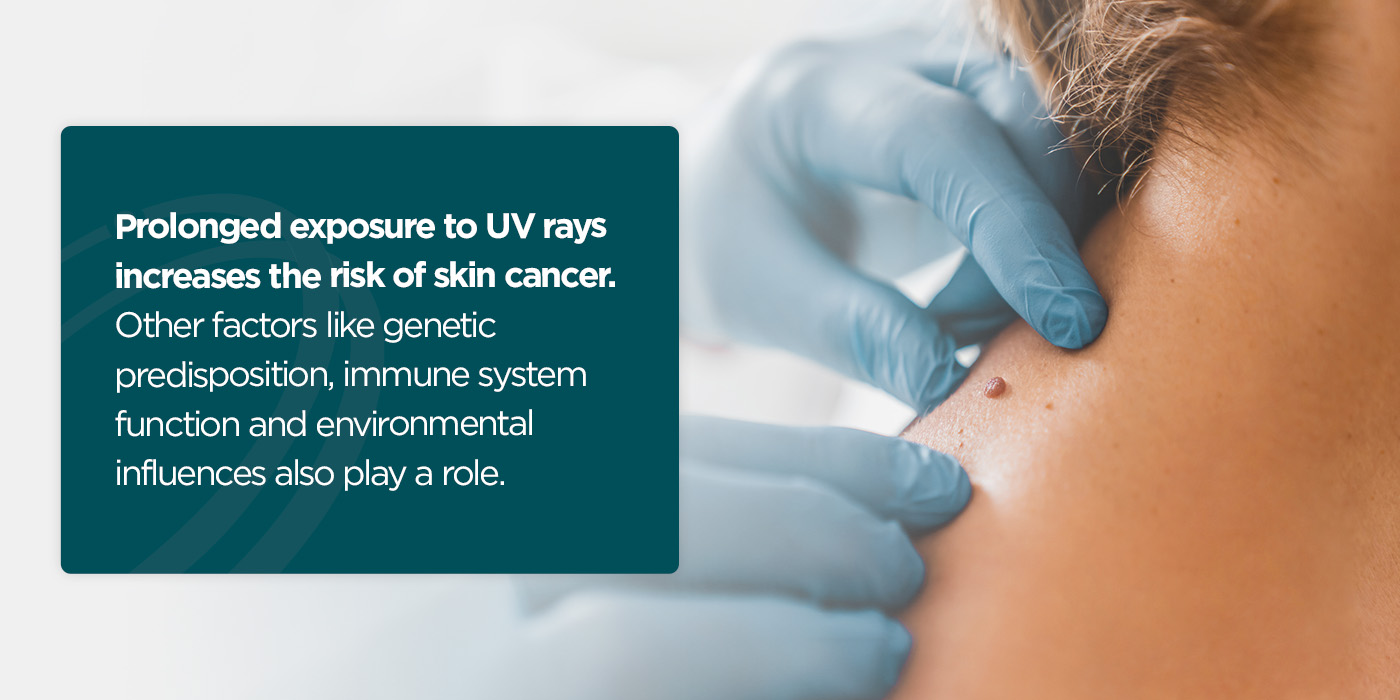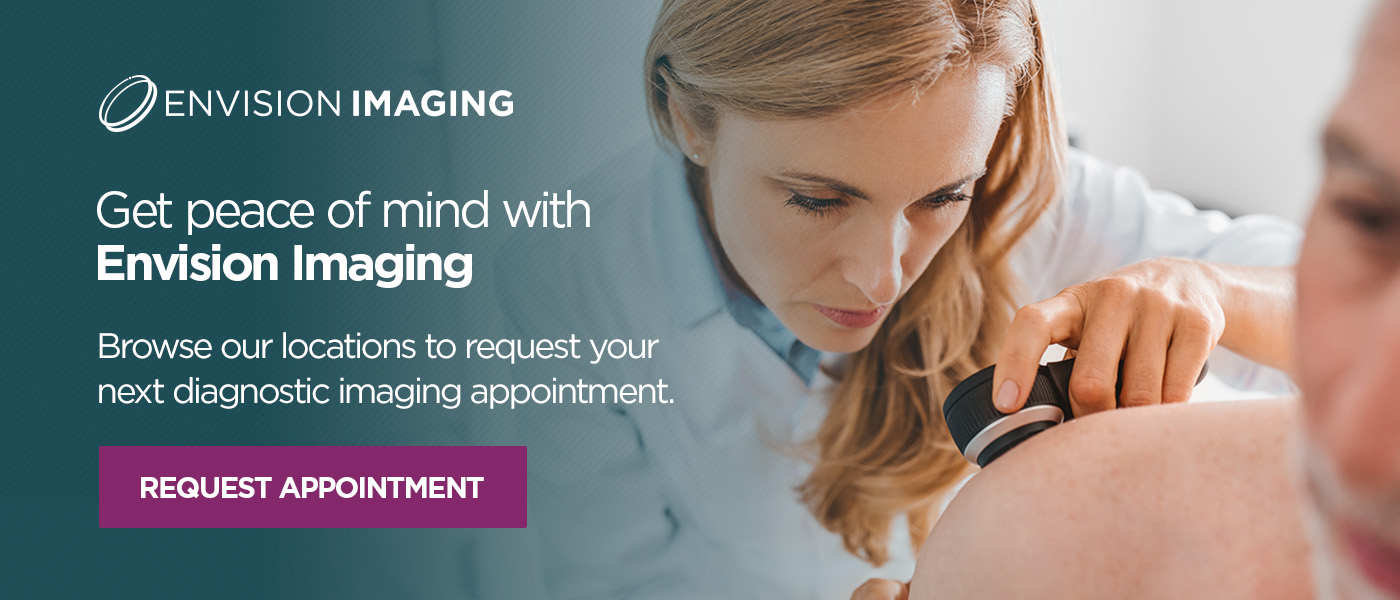Ultraviolet radiation and skin cancer
Our skin is a protective barrier. Understanding the potential risks that can compromise the health of our skin, particularly when it comes to ultraviolet (UV) radiation, can help us take preventive measures against skin cancer.
Protecting the skin from the harmful effects of UV radiation is not just a matter of maintaining its youthful glow and beauty. It is an essential step in preserving your overall health and well-being. By taking proactive measures to prevent UV radiation, you are investing in the long-term health of your skin. Shielding your skin from UV rays can help reduce the risk of developing skin cancer.
What is skin cancer?
Skin cancer occurs when the cells in our skin experience abnormal growth and multiply uncontrollably. This condition can manifest in various forms, including melanoma and carcinoma. Prolonged exposure to UV radiation, whether from the sun or artificial sources like tanning beds, is a significant risk factor for developing skin cancer.
What is ultraviolet radiation?
UV radiation, or ultraviolet radiation, is a form of electromagnetic radiation from the sun and artificial sources like tanning beds. This radiation is invisible to the naked eye but can profoundly impact our skin health.
There are three types of UV radiation:
- UVA radiation: UVA rays have the longest wavelength among the three types of UV radiation. UVA rays can penetrate deep into the skin layers, reaching the dermis, the thickest layer of the skin. The rays are present throughout the day, regardless of the season, and they can penetrate clouds and glass. These rays are often associated with premature skin aging and wrinkles.
- UVB radiation: UVB rays are partially absorbed by the ozone layer. They primarily affect the outermost layer of the skin, called the epidermis. These rays are at their highest during midday and summer, especially at higher altitudes. This type of radiation is a major cause of sunburns and can also contribute to the development of skin cancer.
- UVC radiation: UVC rays have the shortest wavelength and are mostly absorbed by the Earth’s atmosphere. They are typically not a significant concern for humans, as they do not significantly reach the Earth’s surface.
How does UV radiation link to skin cancer?
Prolonged exposure to UV rays increases the risk of skin cancer. However, radiation exposure is not the sole cause of skin cancer. Other factors like genetic predisposition, immune system function and environmental influences also play a role. UV radiation is a significant contributor, and protecting ourselves from excessive exposure minimizes the risk of developing the following types of skin cancer.
- Melanoma: Intense and intermittent exposure to UV radiation, such as sunburns during childhood or adolescence, significantly increases the risk of developing signs of melanoma later in life. UV radiation can damage the DNA within skin cells, leading to mutations that can trigger uncontrolled cell growth and the formation of cancerous melanoma cells.
- Basal cell carcinoma (BCC): The cumulative effects of prolonged sun exposure, especially on areas that receive the most sunlight, such as the face, neck and hands, can contribute to BCC’s development. UV radiation damages the DNA of basal cells in the deepest layer of the epidermis, leading to the formation of cancerous growths.
- Squamous cell carcinoma (SCC): SCC is another skin cancer closely associated with UV radiation exposure. Chronic exposure to UV radiation over the years can cause mutations in the DNA of squamous cells found in the upper layers of the skin.
What are the risk factors for skin cancer?
While UV radiation is a primary risk factor for developing skin cancer, be aware of other factors that can increase the likelihood of developing this condition. Remember that having one or more risk factors does not necessarily mean developing skin cancer. However, these factors can increase your vulnerability, emphasizing the need for diligent sun protection and regular skin checks:
- UV radiation exposure: Prolonged exposure to UV radiation, whether from the sun or artificial sources like tanning beds, increases the risk of developing skin cancer. Intense or frequent sunburns, cumulative sun exposure over time and occupations or activities that involve prolonged outdoor exposure are all contributing factors.
- Skin type: People with fair or light skin, blond or red hair and blue, green or hazel eyes are generally at higher risk.
- Family history: If a close relative, such as a parent or sibling, has had skin cancer, particularly melanoma, your risk may be higher.
- Personal history of skin cancer: If you have previously been diagnosed with skin cancer, you have an increased risk of developing it again. Regular self-examinations and follow-up visits with a dermatologist are crucial in such cases.
- Age: The risk of developing skin cancer generally increases with age. However, melanoma, the most aggressive form of skin cancer, can occur at any age.
- Weakened immune system: Individuals with a weakened immune system, such as organ transplant recipients, HIV patients or those undergoing certain medical treatments, are at a higher risk of developing skin cancer.
- Environmental factors: Living in regions closer to the equator or at higher altitudes, where UV radiation levels are higher, can increase the risk of skin cancer. Exposure to certain chemicals, such as arsenic, can also contribute to the development of skin cancer.
How can I protect my skin?
Protect your skin by adopting sun-safe practices and integrating them into your daily routine. Here are some effective strategies for protecting your skin:
- Apply sunscreen: Use a broad-spectrum sunscreen with a sun protection factor (SPF) of 30 or higher. Use as directed.
- Seek shade: Seek shade to reduce your UV exposure.
- Wear protective clothing: Opt for lightweight, long-sleeved shirts, long pants and wide-brimmed hats that shade your face, neck and ears. Consider clothing with built-in UPF (Ultraviolet Protection Factor) for added protection.
- Wear sunglasses: Protect your eyes and the skin around them with UV protection. Look for sunglasses that block 100% of UVA and UVB rays.
- Avoid tanning beds: Artificial tanning beds emit UV radiation, which can harm your skin. A tan is a sign that your skin has been injured.
- Check the UV index: Be aware of the UV Index, a scale that measures the strength of UV radiation in your area. Plan outdoor activities accordingly, aiming for times when the UV Index is lower.
- Perform regular skin self-examinations: Familiarize yourself with your skin and perform regular self-examinations to spot any changes or abnormalities. Pay attention to new moles, changes in existing moles or any other suspicious growths. Consult a dermatologist if you notice anything concerning.
- Visit a dermatologist: Schedule regular checkups with a dermatologist, especially if you have a history of skin cancer or significant risk factors. A dermatologist can assess your skin, provide guidance and perform professional skin examinations to detect potential issues early.
What does skin cancer look like? The ABCDE rule for checking moles
The ABCDE rule is a helpful guideline for checking moles and identifying potential signs of skin cancer. Remember, the rule serves as a general guideline. It’s best to consult a dermatologist for an evaluation if you have concerns about your skin health. Here’s a breakdown of what each letter represents:
- A – Asymmetry: Normal moles are usually symmetrical, meaning if you drew a line through the middle, both halves would look similar. Asymmetrical moles could be a cause for concern.
- B – Border: Pay attention to the borders of your moles. Suspicious moles may have irregular, blurred or jagged edges, while benign moles often have smooth and well-defined borders.
- C – Color: Normal moles typically have a uniform color, such as brown. Moles with multiple colors, including shades of black, brown, red, white or blue, may warrant further examination.
- D – Diameter: Benign moles are usually smaller in size. Large moles should be monitored more closely.
- E – Evolution: Changes in a mole’s size, shape, color or appearance over time could indicate a potential problem. Keep track of evolving moles and seek medical attention if you notice significant changes.
Get peace of mind with Envision Radiology
By adopting sun-safe practices, you can significantly reduce your risk of developing skin cancer. Additionally, regular self-examinations and professional skin checks by a dermatologist play a vital role in early detection and timely intervention.
At Envision Radiology, we understand the importance of prioritizing your skin health and overall well-being. As a provider of world-class diagnostic imaging services, we are committed to enhancing our patient’s health and quality of life. Our compassionate care, state-of-the-art facilities and accurate imaging results ensure that your experience with us is pleasant and reliable.
From the moment you contact or enter our center, we take pride in delivering spectacular service. We recognize that each person’s visit comes with unique circumstances, and our dedicated staff is laser-focused on providing a pleasant experience without compromising the quality of care. We strive to provide affordable operational excellence and accept various insurance plans to ensure accessibility for all.
If your doctor requests you receive an imaging test to determine whether cancer cells have metastasized to bones or internal organs, trust Envision Radiology. Together, let us prioritize skin health, embrace a sun-safe lifestyle and preserve the radiance that comes with healthy and cared-for skin.
Browse our locations to request your next diagnostic imaging appointment. Our world-class facilities, compassionate care and accurate results ensure a pleasant and reliable experience.




